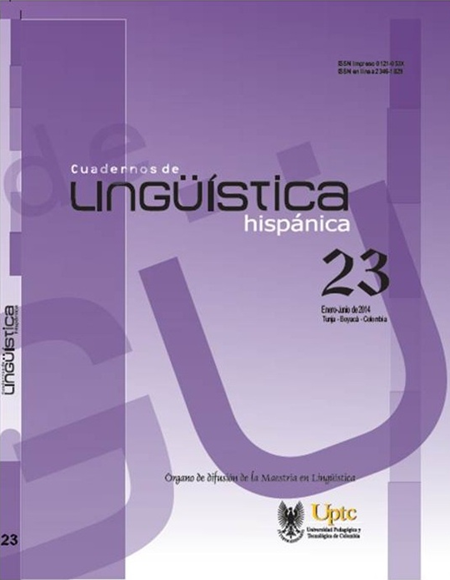English teaching through project based learning method, in rural area

Abstract
The lack of motivation to learn English is a common problem in rural schools. Students do not perceive this language as a necessary tool for the future. This study aims at describing and interpreting to what extent the implementation of the Project-Based Method helps to increase English skills as well as the development of certain human values in students. This study also aims at discussing whether increasing language skills can be compared to learning and the improvement of relationships between students and teachers. Two mini-projects were developed with eighth grade students at a public institution of Boyacá, but for this paper we took into account only one of them. The results reveal three conclusions: first, students remain motivated to learn English when addressing issues related to their context, second, they hold in their mind the vocabulary when they associate it with pedagogical activities in which they are actively involved, and finally, the strategy of mini-projects strengthens the relationship between student and teacher even more.
Keywords
Motivation, context, factors affecting motivation, Project-based learning method.
References
- Ahmed, S. (2013). The Current Practices of Teaching Grammar in CLT at Secondary School Level in Bangladesh: Problems and Probable Solutions. In Theory and Practice in Language Studies, Vol. 3, No 8, (1328-1334)
- Aubel, J. (1994)Guidelines for Studies Using theGroup Interview technique International Labour Office Geneva World Employment Programme. International Labour Ornanization.
- Dornyei, Z. (1998) Motivation in Second Foreign Language. Language Teaching Volume 31 (117-135) Thames Valley University, London.
- Goetz, J. P. and LeCompte, M. D. (1984). Ethnography and Qualitative Design in Educational Research. Orlando, FL: Academic Press.
- Guion, L. ( 2002) Ttiangulation: Establishing the validity of Qualitative Studies. Institute of Food and Agricultural Sciences. University of Florida.
- Hardré, P. Sullivan, D. and Roberts. N. (2008) Rural Teachers´ BestMotivating Strategies: A Blending of Teachers´ and Students´ Perspectives. (19-31).
- Katz, L. G., & Chard, S. C. (1989). Engaging Children’s Minds: The Project Approach. Norwood, NJ: Ablex. (ERIC Document No. ED407074) February 2012.
- Keblawi, F. (1998). A Review of Language Learning Motivation Theories (23-58).
- Lopez, A. Encabo, E. Arburim, C. Paul (2008). Teachers´ Attitudes Towards Correcting Students´ written errors and Mistakes. En Porta Linguarum. Vol. 10, Juny. (21-30).
- Merriam, S. (2003). Case Study Research in Education: A qualitative Approach. San Francisco. Oxford: Jossey-Bass Publishers.
- Nunan, D. (1989). Designing Tasks for the Communicative Classroom. Cambridge: Cambridge University Press.
- Ododa, H. (2009). Posted on March 2010 Political science.
- Peacok, M. (1997). The Effect of Authentic Materials on the Motivation of EFL. ELT Journal Vol 51 Oxford University Press.
- Root, E. (1999). Motivation and Learning Strategies in a Foreign Language Setting: A look at a Learner of Korean. ( CarlaWorking paper # 14)Minneapolis. University of Minessota. Center for Advanced Research on Language Adquisition. Retrieved from http:// www.carla.umn.edu/resources/ working papers/
- Silberman, M. (1996). Active Learning: 101 Strategies to Teach Any Subject. Boston: Allyn and Bacon.
- Souriyavongsa. T, Rany. S. Zainol.M, Lai.L. (2012). Factors Causes Students low English Language Learning: ACase Study in theNationalUniversity of Laos. International Journal of English Language Education. Vol 1 No. 1.
- Willis, D. (1983). The Implications of Discourse Analysis for the Teaching of Oral Communications.Birmingham University.